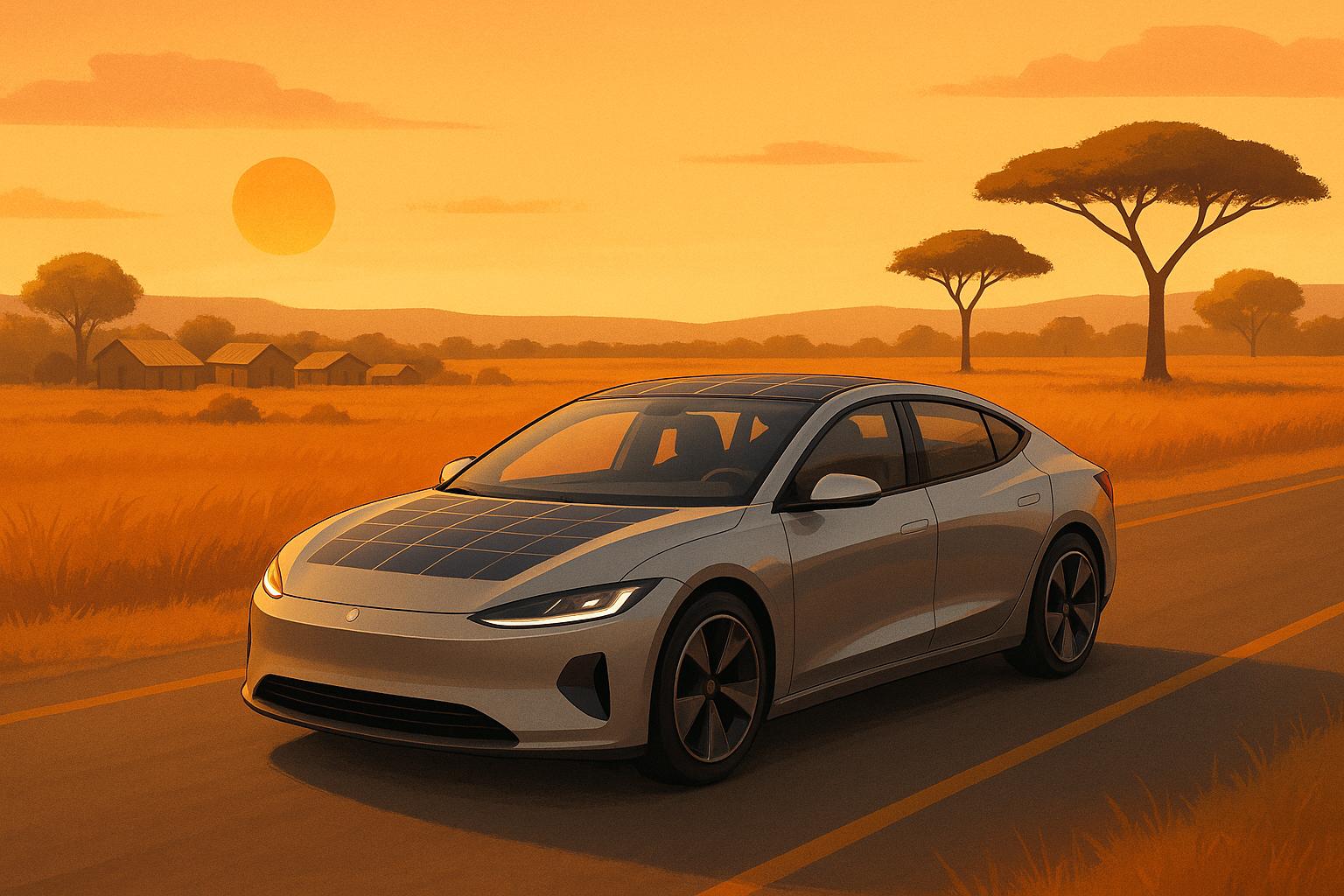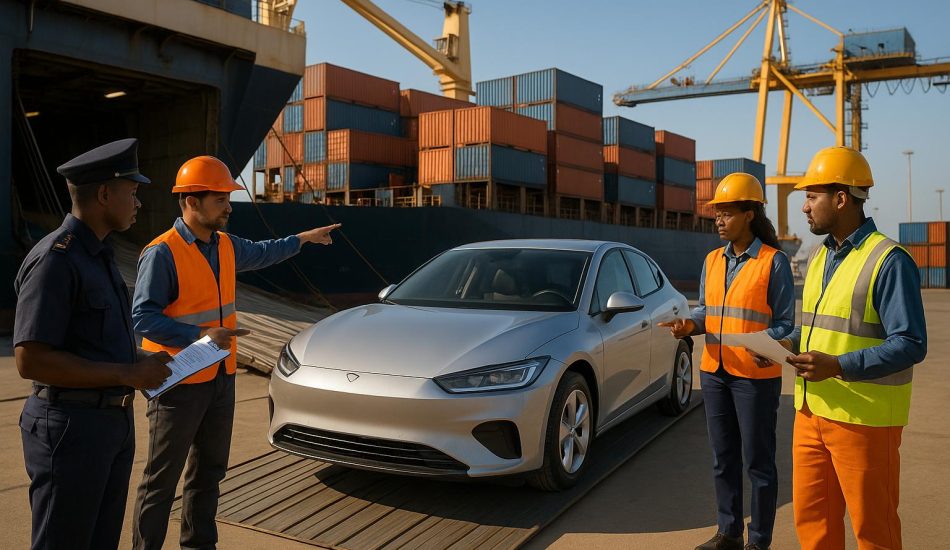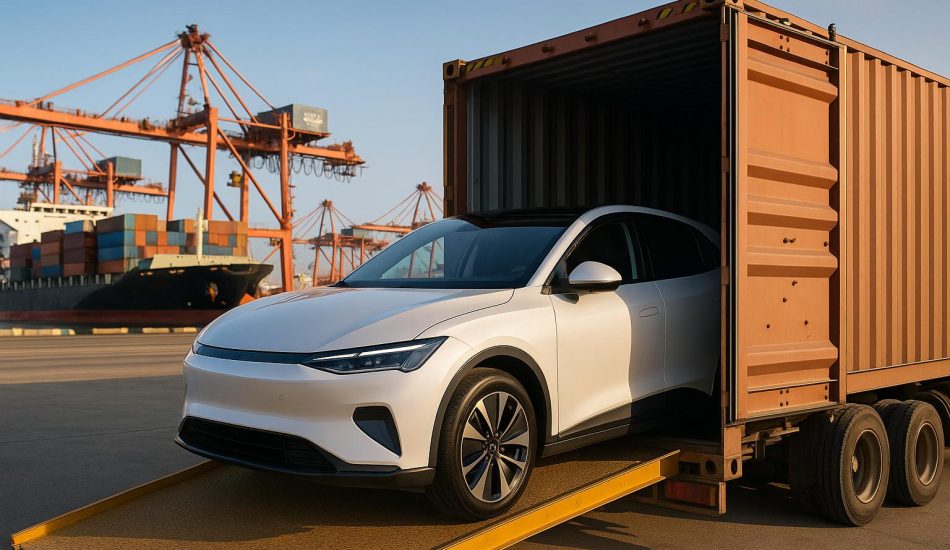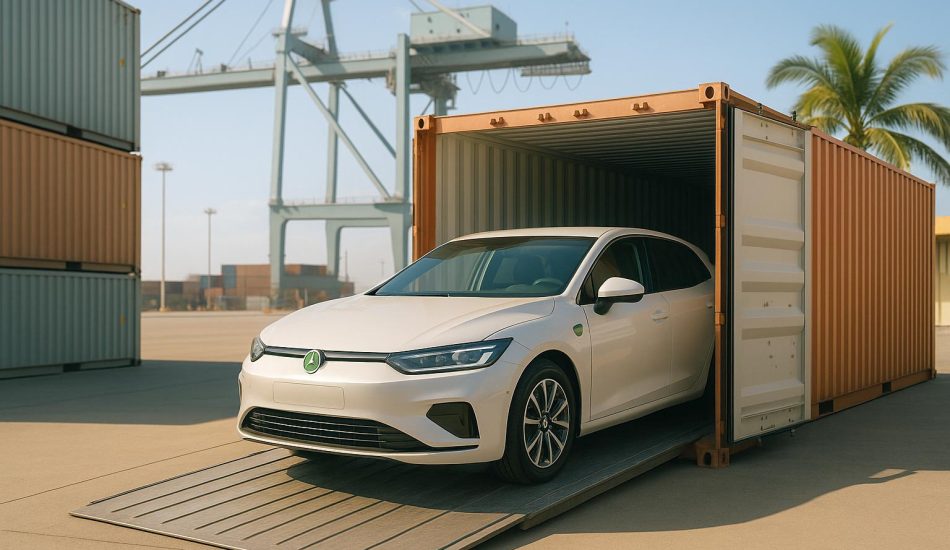
Electric cars (EVs) in Africa can save you money in the long run, but the timeline to cost savings depends on factors like financing, import duties, and fuel prices. Here’s the quick takeaway:
- Initial Cost: EVs cost 13.5% more upfront than gas cars.
- Fuel/Energy Costs: EVs cost $3.17 per 100 miles vs. $7.92 for gas cars.
- Maintenance: EVs have 25% lower lifetime maintenance costs.
- Financing: Lower interest rates (e.g., 10%) can make EVs cost-effective in the first year.
- Environmental Impact: EVs reduce CO₂ emissions by 72%.
Quick Comparison
| Cost Factor | Electric Vehicles (EVs) | Gas Vehicles |
|---|---|---|
| Initial Purchase | Higher ($25K–$60K) | Lower |
| Fuel/Energy (100 mi) | $3.17 | $7.92 |
| Maintenance | 25% lower costs | Higher due to frequent servicing |
| Import Duties | 20% (varies) | Standard rates |
| Environmental Impact | 72% lower CO₂ emissions | 3.35x higher CO₂ |
Key Insight: Policies like reduced interest rates and waived import duties can make EVs as affordable as gas cars within the first year. Without incentives, cost parity may take up to 11 years. EVs also offer significant environmental benefits, making them a smart long-term choice.
TCS | We test drive South Africa’s cheapest electric car

1. Electric Vehicle Costs
Several factors influence the affordability of electric vehicles (EVs) in Africa, including their purchase price, financing, import duties, charging, and maintenance expenses.
Purchase Price and Financing
In Ghana, high interest rates – reaching up to 23% – significantly impact the total cost of owning an EV. At these rates, cost parity between battery electric vehicles (BEVs) and traditional cars is typically achieved by the seventh year of ownership. However, if interest rates drop to 10%, parity can be reached within the first year. These findings highlight how financing terms play a critical role in EV affordability.
Import and Tax Considerations
Import duties are another key factor. Many African countries apply a 20% import duty on EVs, which adds to their overall cost. Research in Ghana suggests that removing this duty could shorten the time to cost parity by about a year.
Charging and Operating Costs
The table below breaks down some of the main operating costs for EV owners:
| Cost Category | Electric Vehicles | Details |
|---|---|---|
| Regular Maintenance | About 25% lower than gas vehicles | EVs have fewer moving parts and simpler systems |
| Battery Replacement | $5,000 – $20,000 | Costs apply if replacement is needed outside warranty |
| Routine Service | Minimal | Includes basic checks for filters, brakes, and tires |
Maintenance and Repairs
EVs have simpler mechanical systems, which translate into lower routine maintenance needs. They don’t require oil changes, timing belt replacements, or other common services associated with gas vehicles. Their single-speed transmission also reduces the likelihood of mechanical failures. Additionally, regenerative braking improves energy efficiency while extending brake life.
However, there are some drawbacks. Repairs can sometimes take longer and may add around $950 in extra costs. Specialized technicians and equipment are often required, which can increase service costs for specific repairs. Despite these challenges, EVs generally offer around 25% lower maintenance expenses over time compared to traditional vehicles.
Next, we’ll compare these costs with those of gas-powered vehicles to provide a clearer picture.
2. Gas Vehicle Costs
Gas-powered vehicles often come with a lower initial price tag but bring higher ongoing expenses. The recent removal of fuel subsidies has significantly driven up fuel costs, making this a critical factor for owners.
Purchase and Import Costs
Gas vehicles are typically more affordable to buy compared to electric cars. However, the final price can vary depending on a country’s import duties and taxes. While the initial cost is appealing, rising fuel prices have a major impact on overall expenses.
Fuel Expenses
In Nigeria, fuel prices have soared due to policy changes. For instance, petrol prices jumped from about N250 ($0.16) per liter in March 2023 to N1,180 ($0.74) per liter by October 2024. This sharp increase has led many drivers to consider alternative fuel solutions.
| Time Period | Petrol Price per Liter | Example Cost |
|---|---|---|
| March 2023 | $0.16 (N250) | Around $157/month (N250,000) for petrol |
| October 2024 | $0.74 (N1,180) | $502 one-time cost for CNG conversion (N800,000) |
Alternative Fuel Solutions
To cope with rising petrol prices, many Nigerian drivers are switching to Compressed Natural Gas (CNG). For example, Jimoh Abeeb, a civil engineer, shared his experience:
"It is a game changer."
After converting his vehicle to CNG, Abeeb’s fuel costs dropped to just $1.88 (N3,000) for three days of travel, covering between 150 and 200 kilometers.
Elizabeth Obode, an energy and industry consultant, also noted:
"Drivers are interested in CNG because it is cheaper rather than ‘cleaner.’"
Future Cost Projections
The market for CNG and LPG vehicles in Africa is expected to grow by 7% annually between 2025 and 2030, according to Mordor Intelligence. This growth is largely driven by the need for cost-effective fuel options.
Maintenance Requirements
Gas vehicles require regular maintenance, including oil changes every 3,000–7,500 miles, timing belt replacements, transmission servicing, spark plug replacements, and cleaning of the fuel system. While the upfront cost of gas vehicles is lower, these maintenance needs contribute to higher long-term expenses.
sbb-itb-99e19e3
Direct Comparison
This section provides a detailed look at how electric and gas vehicles compare in Ghana, focusing on costs, environmental impact, and infrastructure.
Total Cost Breakdown
| Cost Factor | Electric Vehicles | Gas Vehicles |
|---|---|---|
| Initial Purchase | 13.5% higher than comparable gas models | Lower upfront cost |
| Fuel/Energy (per 100 miles) | $3.17 equivalent | $7.92 equivalent |
| Annual Maintenance | 25% lower lifetime costs | Higher due to frequent servicing |
| Infrastructure Setup | $826 for a home charger | No additional setup costs |
| Import Duties | 20% (waived in some regions) | Standard import duties apply |
Long-Term Cost Analysis
In Ghana, electric vehicles can reach cost parity with gas vehicles depending on specific conditions:
- Standard conditions: Parity achieved by year 11
- With import duty waiver: Parity achieved by year 10
- With 10% interest rate: Parity achieved by year 7
- With both incentives: Parity achieved in the first year
Environmental Impact Comparison
Electric vehicles offer a clear environmental advantage over gas vehicles in Ghana. Emission reductions include:
- CO₂: 72% lower
- NOₓ: 85% lower
- VOCs: 99.2% lower
- SOₓ: 41% lower
- Particulate Matter: 60% lower
Gas vehicles, in comparison, emit 3.35 times more CO₂ than electric vehicles.
Real-World Cost Implications
Studies in Ghana show that electric vehicles become much more cost-competitive when financed under special schemes with interest rates below 10%. These savings make EVs a strong contender, even when factoring in the cost of charging infrastructure.
Infrastructure Considerations
Gas vehicles rely on existing infrastructure, while electric vehicles require upfront investments for charging setups:
- Public charging station: Around $26,000 in Ghana
- Home charging installation: Averages $826 per vehicle
Although these initial costs may seem high, they are offset by significant long-term savings in energy and maintenance expenses.
Final Analysis
In Ghana, the cost-effectiveness of electric vehicles (EVs) hinges on financial incentives and accessible financing options. Without incentives, achieving cost parity with traditional vehicles may take about 11 years. However, with interest rates under 10% and the elimination of the 20% import duty, parity could be reached in the first year. These financial changes could pave the way for both economic benefits and a cleaner environment.
Financial Viability Factors
The affordability of EVs improves significantly when financial policies and incentives align to encourage adoption. Lower interest rates, combined with import duty waivers, provide clear economic advantages for potential buyers.
Environmental Benefits
Beyond cost considerations, EVs offer immediate environmental improvements. They can reduce emissions significantly: CO₂ by 72%, NOₓ by 85%, VOCs by 99.2%, SOₓ by 41%, and particulate matter by 60%. These reductions highlight the environmental impact of transitioning to EVs.
Tips for Potential Buyers
For those considering EVs in Africa, here are some practical steps to maximize the value of their investment:
- Explore Financing Options: Securing loans with interest rates below 10% can shorten the time to cost parity by up to four years.
- Look Into Local Incentives: Check for regions offering reduced or waived import duties on EVs.
- Assess Total Costs: Factor in all operating expenses, such as fuel versus electricity costs and potential maintenance savings.
Switching to EVs in Africa not only makes sense financially but also contributes to significant environmental improvements.
FAQs
How do import duties and financing options affect the cost of owning an electric car in Africa?
Import duties and financing terms play a major role in determining the affordability of electric vehicles (EVs) in Africa. For example, in Ghana, removing the 20% import duty on EVs has been shown to reduce the time it takes for EVs to become cost-competitive with traditional gas-powered cars by about a year.
Similarly, lowering interest rates on EV loans to around 10% can make these vehicles more financially viable from the very first year, especially when combined with waived import duties. These factors can significantly influence the long-term affordability of EV ownership in the region.
What are the environmental advantages of switching to electric vehicles over gas-powered cars in Africa?
Switching to electric vehicles (EVs) in Africa offers major environmental benefits, especially in reducing greenhouse gas emissions. EVs produce significantly fewer emissions compared to traditional gas-powered vehicles, particularly when charged using renewable energy sources like solar power. For example, electric buses emit far less CO2 than their internal combustion engine (ICE) counterparts, and this difference becomes even more dramatic when renewable energy is used for charging.
Countries like South Africa, which currently has the highest CO2 emissions in Africa, could make a substantial impact by transitioning to green mobility. By adopting EVs, African nations can not only lower their carbon footprints but also contribute to global efforts to combat climate change, all while improving local air quality and reducing dependence on fossil fuels.
What should buyers in Africa consider to make electric cars more affordable over time?
To make electric vehicles (EVs) more affordable in the long run, buyers in Africa should evaluate a few key factors. Start by looking into government incentives, such as tax breaks or import duty exemptions, that can reduce the upfront cost of an EV. Additionally, explore financing options like low-interest loans to help bridge the price gap between EVs and traditional gas-powered cars.
It’s also important to assess the total cost of ownership. This includes comparing electricity costs for charging versus fuel expenses, as well as factoring in the typically lower maintenance costs of EVs due to fewer moving parts. Finally, consider the availability of charging infrastructure in your area to ensure convenience and avoid unexpected costs in the future.




